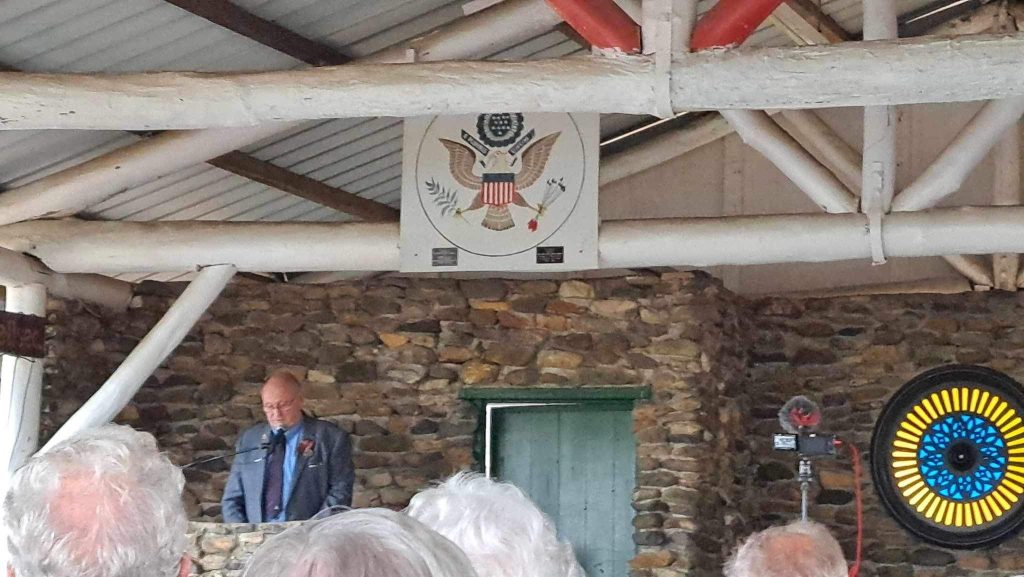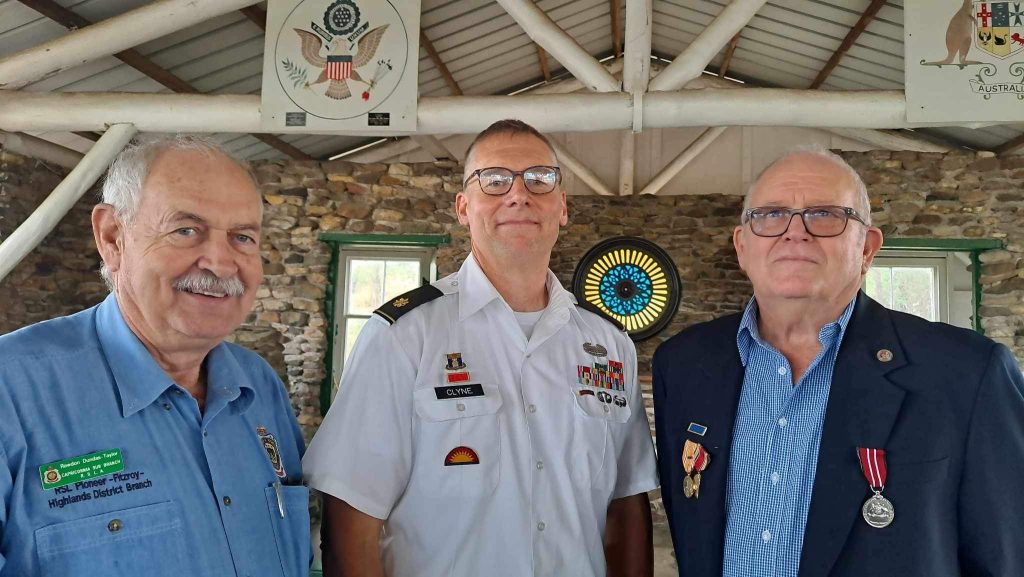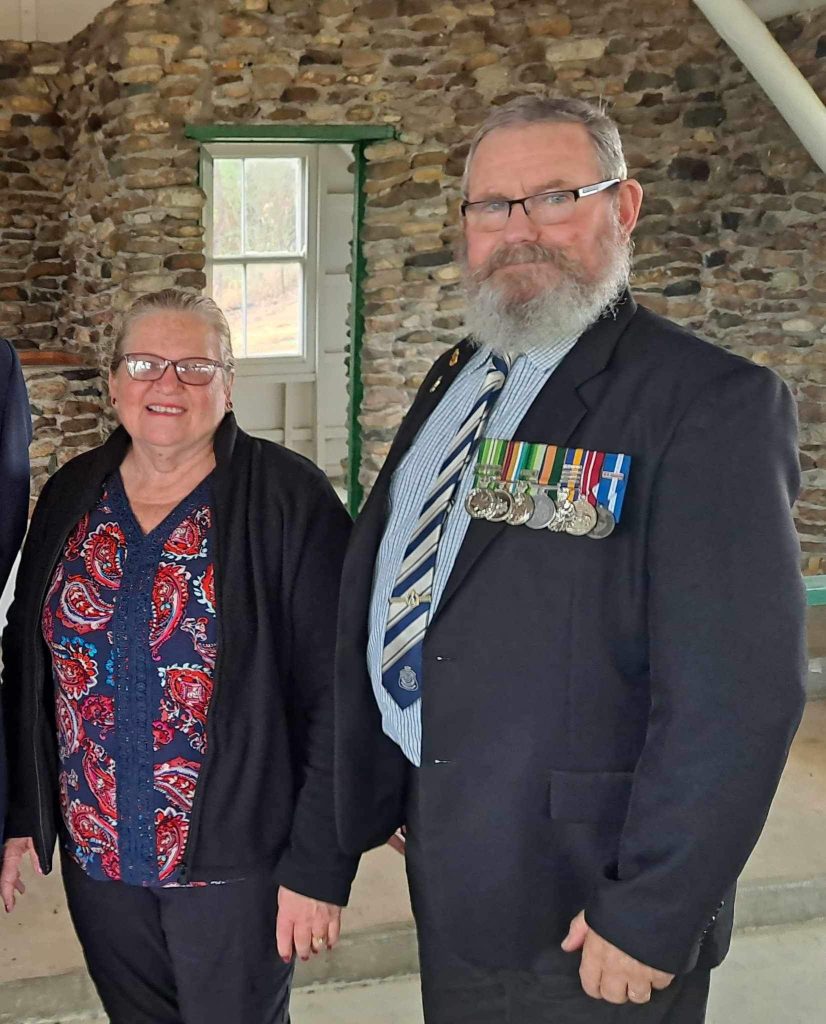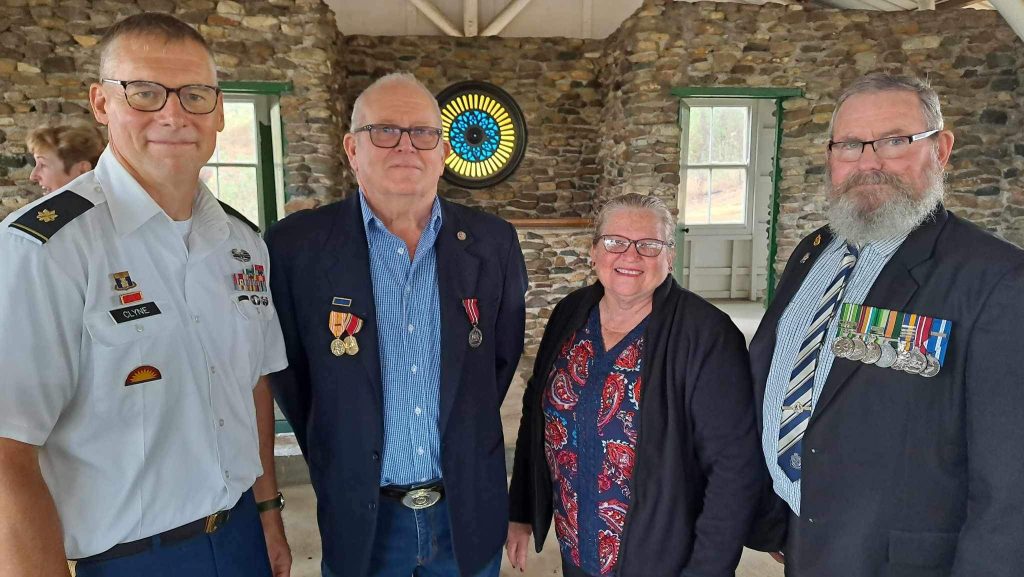80 Anniversary 4 July 2023
Distinguished guests, veterans and serving men and women, ladies and gentlemen, boys and girls, it is an honour and privilege to be here today to address you.
I thank the Livingstone Shire Council for inviting me.
Australians and Americans have fought alongside each other in every major world military action since 1914, including:
World War 1, World War 2, Korea, Vietnam, The Persian Gulf,
Somalia, East Timor, Iraq, Afghanistan.
In early 1942, Rockhampton, with a population of 35,000, became a major focal point for a massive build-up of American troops, equipment and camps.
Eventually, more than 70,000 American military personnel assigned to several US Army divisions and their numerous support units would call the Rockhampton region their temporary home from 1942 to 1944 as they trained, left for battle, and then returned to Rockhampton to recuperate and refit.
Large expanses of available pastoral land, jungle and nearby beaches made the Rockhampton region in the minds of US Army planners an ideal location for its inexperienced and undertrained troops to acclimate to hot, humid weather and, crucially, to practise the beach landings and other tactics that would need to be executed countless times in operations to recapture New Guinea, the Philippines and the other battlegrounds that lay between Australia and Japan.
Aside from these advantages, Major General Robert Eichelberger, commander of American forces gathering in Rockhampton, wanted to be closer to the battle front and to put as much distance between himself and Douglas MacArthur, the commander of US forces in the Southwest Pacific.
MacArthur, in the minds of many was an aloof, publicity-seeking leader, was comfortably in a hotel suite in Brisbane. As MacArthur had refused Eichelberger permission to live with his troops at the front, Rockhampton was as close as he could get for the moment.
Eichelberger was genuinely fond of Australians and thought Rockhampton was the friendliest place in Australia towards Americans.
He took up residence in a stately house at the top of Ward Street, The Range.
Local boys thought Eichelberger cut a grand, heroic figure in his Army uniform and followed him on his short walks down Ward Street to play tennis on the grounds of a nearby mansion where one of his division commanders lived.
Eichelberger’s officers found lodgings in several of the Rockhampton’s large hotels, including the Criterion and the Commercial (known now as the Heritage).
Many private residences were also borrowed from their owners. Many of these buildings are still standing today.
For others — the GIs, doctors, nurses, engineers and other specialists — a home consisted of a tent or a temporary building scattered around town or in two sprawling camps located outside of the city – Camp Rockhampton, running from Moores Creek, north along the Bruce Highway and then out the Rockhampton-Yeppoon Road to Ironpot; and Camp Caves, lying between Etna Creek Road and Alligator Creek. Nerimbera, Thompson’s Point, Keppel Sands and Yeppoon hosted camps as well.
To accommodate the huge influx of troops and the services required to support their needs, the Americans together with Australians built the necessary infrastructure: warehouses, roads, water pumping stations, electrical power plants, miles of pipes and cables, hospitals, mess halls, latrines, air raid shelters and an airfield to supplement Rockhampton’s existing aerodrome.
The town had no shortage of places to get a drink; like most typical Australian towns, there seemed to be at least one hotel at every major street intersection. Buses struggled to ferry the Americans to the long, pristine beaches at Yeppoon and Lammermore.
To bolster morale, Eleanor Roosevelt visited briefly in 1943. Gary Cooper, one of the biggest Hollywood stars of the day, devoted several weeks visiting the troops in and around Rockhampton and the popular comedian Joe E. Brown, put on shows.
It was a time that radically transformed Rockhampton and its citizens.
GIs were often hosted by Australians in their homes for meals. Friendships resulted and romances too. Rockhampton contributed its fair share of war brides, many of whom relocated to the US after the war.
There are numerous reminders, remnants and memorials to the American presence. Most prominent is St. Christophers Chapel, erected by US Army engineers in 1943. The chapel still stands and a mass is conducted every year on the Sunday closest to the 4th of July to commemorate the enduring partnership between Australia and the US.
Written on the support beams of the chapel are the names of GIs and their home states who set records in athletic competitions held for morale and physical conditioning.
As many locals will know, before the Covid pandemic, the US usually dispatches tens of thousands of Marines, sailors and soldiers, along with aircraft carriers, amphibious assault ships and their escorts to the Talisman Sabre exercise.
In 2021, the exercise was drastically scaled back in size but expanded international participation with small contingents of British, Japanese, Canadians, South Koreans and New Zealanders.
The story of Americans and Australians who fought against the tyranny and aggression of the German and Japanese powers during World War 2 is one of great triumph and tragedy. The war consumed our young, the very best of us. It destroyed a generation. America and Australia lost the cream of their younger generation.
This Chapel:
- Has become a memorial to the bravery and sacrifice of those Americans who served in the Pacific theatre of the war and laid down their lives for their country in order to safeguard the freedoms of Americans and Australians.
- It is also a symbol to the continuing bond and friendship that has existed between the American and Australian people.
- RSL Central Queensland is sincerely grateful that this piece of military heritage remains today and I thank:
The Beak family past and present for their continuing care of the Chapel over its existence, especially in the early days.
I would also like to acknowledge the late Jack Flemming for his contribution in maintaining the Chapel over many years.
The National Servicemen for their commitment to the Chapel.
The Livingstone Shire Council for planning and organising this service each year and in recent times taking responsibility for the upkeep of the Chapel.
This Chapel is unique as it is the only one built by American soldiers during World War 2 that remains today. It stands here like a beacon to remind present and future generation of Australians of the dark World War 2 days of 1941/45 when the “Americans Came to Town” to help in the defence of our nation.






